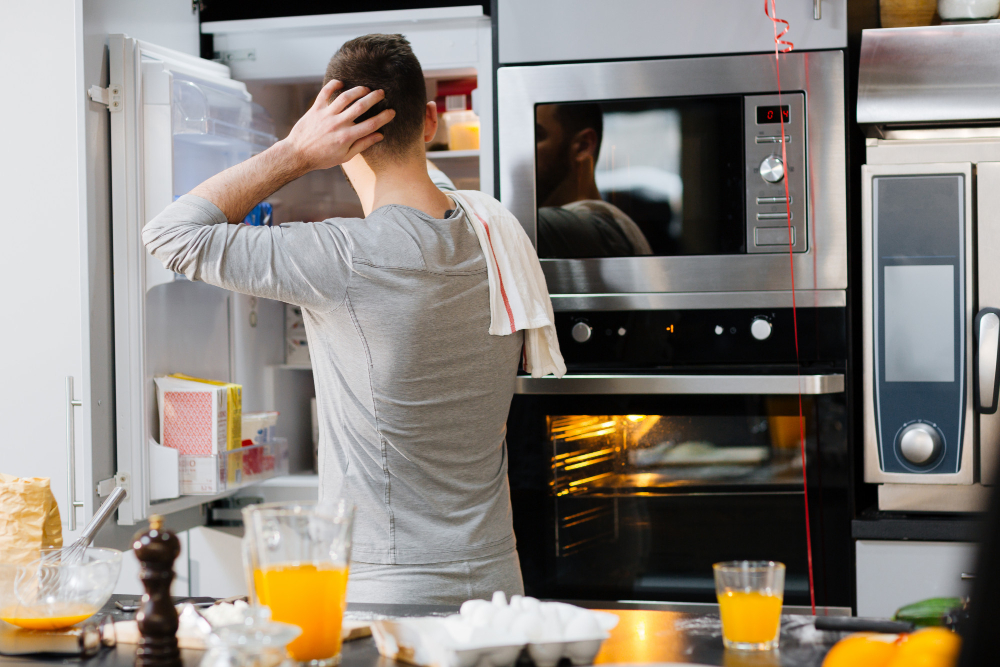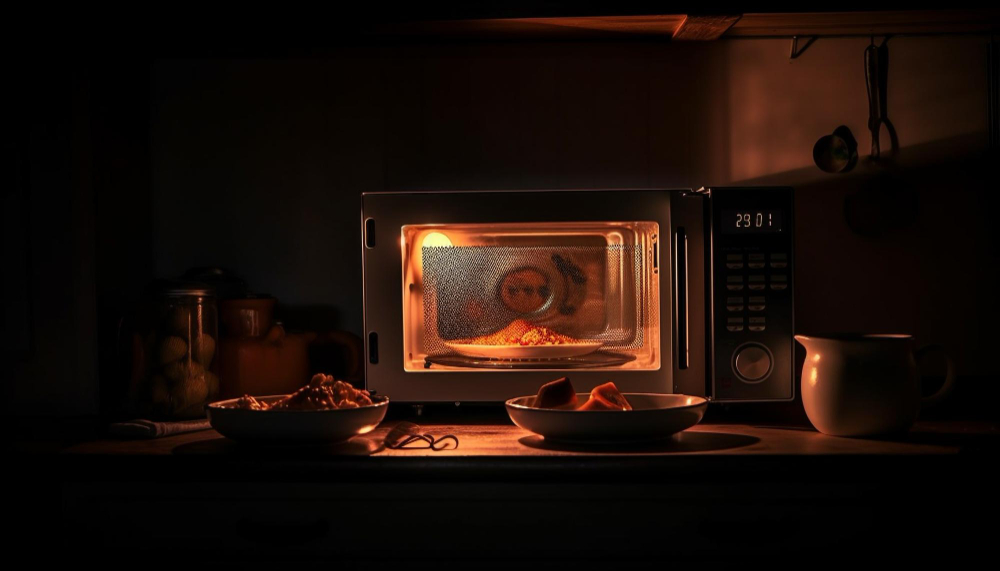Oven Not Working? Try These Troubleshooting Tips
You’re about to bake a cake and suddenly realize your oven’s not working. Frustrating, right? Don’t fret! This guide will help you understand your oven’s anatomy, identify common problems, and give you basic to advanced troubleshooting techniques.
We’ll even tell you when it’s time to call in the pros.
Let’s get that oven back in top shape so you can whip up your favorite dishes in no time!
Understanding Your Oven’s Anatomy
Before you dive into troubleshooting, it’s essential you get a handle on the basic anatomy of your oven. Let’s start with an oven components breakdown.
Your oven’s main parts include the thermostat, heating elements, timer, and the racks. The thermostat controls the temperature; the heating elements generate heat; the timer sets cooking duration, and the racks hold your food.
Now, let’s move onto the heat distribution explanation. The heating elements, located at the top and bottom, distribute heat evenly within the oven. When you set your oven to bake, the bottom element heats up; when you broil, the top one does.
Understanding these components and their functions can help you diagnose why your oven mightn’t be working.
Common Oven Problems and Symptoms
You might encounter several common problems with your oven, each with its own distinct symptoms. Let’s look at some problem indicators.

- If your oven isn’t heating or heating unevenly, the issue might lie with the heating elements or thermostat.
- A self-cleaning feature that’s not working could indicate a faulty door lock.
- Strange noises? You might’ve a fan or motor problem.
Now, for some maintenance tips.
- Regularly inspect the heating elements for damage.
- Test your oven’s thermostat with an oven thermometer to ensure accuracy.
- Clean your oven regularly, but be gentle with the self-cleaning feature.
- Finally, get your oven serviced by a professional if you’re hearing strange noises.
Basic Oven Troubleshooting Techniques
Despite maintaining your oven regularly, some problems may still arise, so let’s delve into a few basic troubleshooting techniques that can help you get it back up and running.
First off, temperature adjustments can be crucial. If your oven’s not heating properly, try recalibrating the temperature settings. Your oven manual will guide you through this process, and it’s simpler than you’d think.
Next, don’t underestimate the power of cleaning techniques. A good scrub can work wonders for your oven’s performance. Food residue can interfere with the oven’s functionality, causing uneven heating or even sparking. So, get yourself a good oven cleaner and put in some elbow grease.
Advanced Oven Repair Tips
When tackling more complex oven issues, you’ll need to delve into advanced repair techniques. DIY component replacements can be a cost-effective solution. But remember, Oven Safety Precautions are paramount. Always disconnect the appliance from the power source before you start. Also, wear protective gloves to guard against sharp edges and hot surfaces.
If your oven isn’t heating evenly, it might be due to a faulty heating element. Replacing it yourself could save you hefty repair fees.
Another common issue is a malfunctioning oven door. Check the hinges and seals for wear and tear. These can also be replaced at home with the right tools and patience.
However, if you’re unsure or hesitant, it’s always best to call a professional.
When to Call a Professional
In light of these DIY solutions, there are times when your oven’s issues might be too complex to handle on your own, prompting the need to call in a professional. It’s not just about fixing the problem, but also ensuring your safety. Professional qualifications matter.
You should hire someone skilled and certified, as they’ll be familiar with various oven models and their unique issues.
Cost considerations are also vital. While it’s tempting to hire the cheapest service, remember, you get what you pay for. Sometimes, spending a bit more guarantees quality work, saving you from future repair costs.
Frequently Asked Questions

Are There Any Specific Brands or Types of Ovens That Tend to Have More Issues Compared to Others?
While brand reliability varies, no specific oven brands or types are prone to more problems. You’ll find all have their quirks. Check oven warranties for assurance, as they differ by brand and model.
Can Different Climates or Weather Conditions Affect My Oven’s Performance?
Yes, your oven’s performance can indeed be influenced by different climates and weather conditions. Extreme humidity or cold can impact its efficiency. Always consider your local climate when troubleshooting your oven’s issues.
How Can I Reduce Energy Consumption While Using the Oven?
To reduce energy consumption, use eco-friendly appliances and adopt efficient cooking techniques. Preheat the oven only when necessary, cook multiple items at once, and keep the oven door closed to maintain heat.
What Are Some Safety Precautions I Should Take While Troubleshooting My Oven?
While troubleshooting your oven, it’s crucial to prioritize safety. Always unplug the oven first. Understand the importance of protective gear like gloves and glasses. Follow precautionary measures like not touching hot surfaces or open wires.
Can I Use Household Items for DIY Oven Repairs, or Will I Need Specialized Tools?
Yes, you can use common household tools for some DIY oven repairs. However, for more complex issues, you’ll likely need specialized repair equipment. Always ensure you’re handling tools safely and correctly.
Conclusion

So, your oven’s playing up? Don’t fret just yet. Start with understanding your oven’s anatomy, then identify common problems and symptoms.
Before you know it, you’ll be breezing through basic troubleshooting techniques. Feeling brave? Try some advanced repair tips.
But remember, if things get too heated, it’s ok to call a professional. After all, safety comes first in every kitchen saga.
